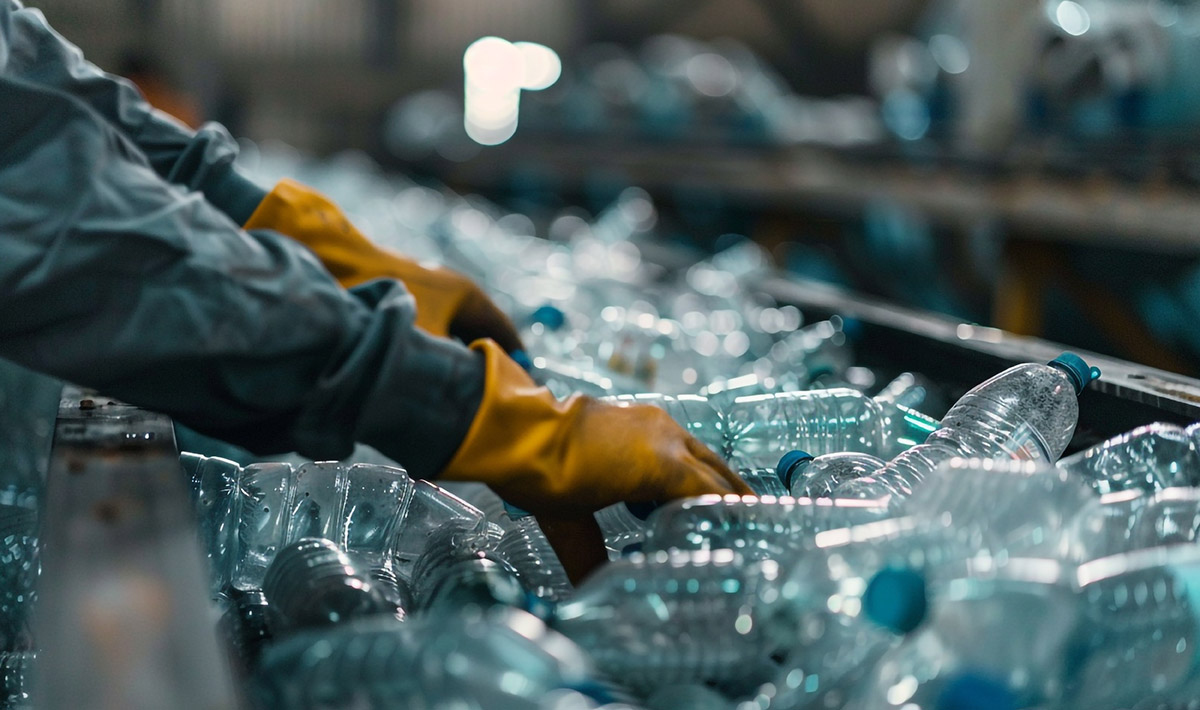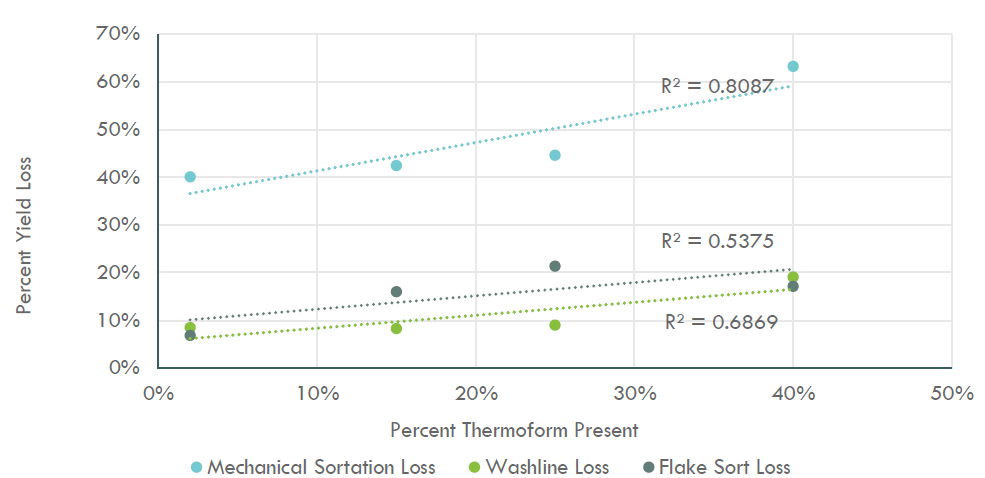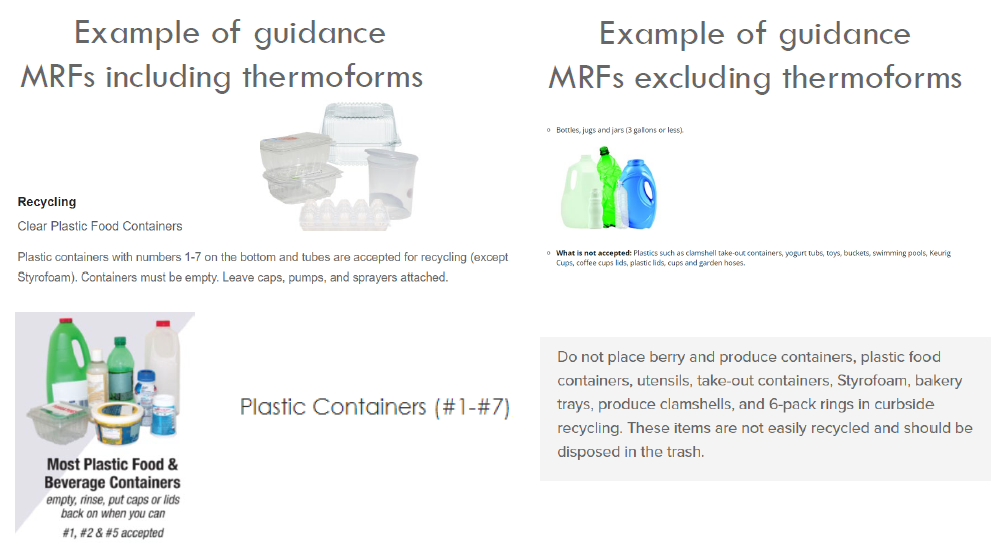Closing the Loop: PET Thermoforms and Bottles in Sinergy

Phase 2 of the “PET Thermoform Recycling Costs & Material Flow Project” examined the technical, economic, and logistical challenges of recycling PET thermoforms and proposed actionable solutions to address these barriers.
Industries and policymakers increasingly prioritize sustainable waste management practices, driving advancements in PET (polyethylene terephthalate) thermoform recycling.
You can also read: PET Thermoforms- A New Landscape for PET Recycling.
A recent study from RRS analyzed the technical, economic, and logistical obstacles in recycling PET thermoforms and offered practical solutions to overcome them.The study highlights opportunities to enhance recycling processes and promote a circular economy for PET materials by focusing on innovative approaches.
Tackling the Challenges
Recyclers face unique difficulties when processing PET thermoforms, commonly used for clamshell packaging and food containers. Despite their compatibility with PET bottles, thermoforms differ in resin grades, additives, and physical properties, complicating their integration into standard recycling systems.
The study found, “Audits revealed minimal differences in PET thermoform levels between communities that educate residents on recycling them and those that do not.” This lack of consistency in consumer behavior and disposal habits further hinders efficient recycling efforts.
Additionally, PET thermoforms’ tendency to stick together and their higher contamination levels disrupt sorting and reclamation processes. These challenges ultimately reduce the yield of recyclable PET flakes, posing obstacles to achieving sustainability goals.
Understanding the Impact on Reclamation
Researchers conducted trials to evaluate how mixing PET thermoforms with bottles affects recycling efficiency. They observed that “higher PET thermoform content in bales reduced the yield of recyclable PET flake.” Despite this reduction, flakes derived from mixed streams still met most end-market specifications for recycled PET (rPET) products.

Thermoform presence and yield loss. Courtesy of THERMOFORM RECYCLING COSTS & MATERIAL FLOW by RRS.
Rather than excluding thermoforms entirely, the study emphasizes refining reclamation processes to mitigate yield loss. This approach ensures the continued use of thermoforms in PET recycling while maintaining the quality of rPET for diverse applications, including bottles, sheets, and fibers.
Implementing Practical Solutions
The study recommends prioritizing segregation efforts at the reclaimer level instead of material recovery facilities (MRFs). Researchers state, “Segregating PET thermoforms for dedicated processing is more cost-effective at the reclaimer level than at materials recovery facilities.” Sorting at the reclaimer level addresses logistical and financial challenges faced by MRFs, such as limited space and high operational costs.
To optimize processing efficiency, reclaimers should focus on upgrading equipment and adjusting operational methods. Regular maintenance and fine-tuning of systems can reduce PET losses and improve yield, accommodating higher volumes of thermoforms.

Example of guidance MRFs including thermoforms. Courtesy of THERMOFORM RECYCLING COSTS & MATERIAL FLOW by RRS.
You can also read: Golden Design Rules for PET Thermoformed Packaging.
Building Demand for Recycled PET
The study highlights the need to increase demand for recycled PET flakes derived from thermoforms. Researchers found that flakes from mixed streams performed well in several applications, including bottles, sheets, and fibers.
“Recovered PET flake from mixed streams met performance standards for applications like bottles, sheets, and fibers,” the study notes, demonstrating the material’s viability for commercial use. Expanding end markets for thermoform-derived rPET can incentivize broader adoption of recycling practices and drive sustainability efforts across industries.
Economic and Environmental Benefits
Optimizing PET thermoform recycling delivers both environmental and economic advantages. Diverting thermoforms from landfills reduces waste and supports sustainability initiatives, while enhanced reclamation efficiency decreases reliance on virgin PET production.
The study stresses the importance of scalable solutions, urging reclaimers to address logistical challenges, including necessary equipment upgrades. These interventions bridge the gap between current recycling practices and the broader industry adoption of thermoform recycling.
Advancing Toward a Circular Economy
Researchers conclude that targeted interventions can align PET thermoform recycling with global efforts to achieve a circular economy. By improving segregation at the reclaimer level, investing in advanced equipment, and fostering market demand for recycled PET flakes, the industry can scale recycling processes effectively.
The study also underscores the importance of consistent consumer education. While technical advancements address operational challenges, public awareness is essential to improving the quality of materials entering recycling systems.
The Conclusion
Recycling PET thermoforms presents challenges such as variations in material properties, contamination, and inconsistent consumer behavior. However, the study identifies practical solutions—such as reclaimer-level segregation, process optimization, and increased market demand—that can effectively overcome these barriers.
Researchers state, “Segregating PET thermoforms for dedicated processing is more cost-effective at the reclaimer level than at MRFs,” emphasizing the need to prioritize reclamation efforts. Additionally, promoting the use of thermoform-derived rPET across industries creates opportunities for sustainable material production while reducing waste.
By adopting innovative solutions and fostering collaboration among stakeholders, the PET recycling industry can make significant strides toward achieving a circular economy. These advancements benefit the environment, create new opportunities for sustainable practices, and support a greener future for the plastics industry.
